It was the first commercial aircraft designed on a computer. Now, a quarter of a century on from its first commercial flight, Thomas Haynes speaks to both Boeing and a retired pilot to find out what made the 777 so good – and what to expect from the 777X.
The year is 1995. OJ Simpson’s trial is gripping the world, Microsoft has launched Windows 95 and the first fully computer-animated film, Toy Story, has been released in cinemas. And on June 7, the first aircraft to be designed entirely on a computer, the Boeing 777, enters commercial service with United Airlines.
Twenty-five years on, it’s clear that the 777 is not just any old airliner. Instead it has become the tried and tested workhorse of many carriers’ fleets and, while it may not have the stage presence of a 747 or Airbus A380, it remains one of the most successful commercial aircraft ever built.
The ‘Triple Seven’
The Boeing 777, or the ‘Triple Seven’ as it’s affectionately known, is a twin-engine widebody aircraft developed in the 1990s.
The Seattle-based manufacturer originally started in the late 1970s with a tri-jet design, but after the widespread adoption of extended-range twin-engine operational performance standards (ETOPS) for flight over water, the firm dropped the plan for a third engine model.

By the late 1980s, it had become clear to Boeing that a clean-sheet design would be required after it attempted to offer airlines a modified version of its 767, but to no avail.
The 777 would bridge the gap in Boeing’s commercial aircraft line up between the 767 and the 747 in terms of capacity.
Video: The first flight of the -200LR on March 8, 2005. The type was the third variant of the popular widebody.
Design
From the outset, the design process of the 777 moved away from how Boeing had typically created commercial aircraft.
For the first time, the manufacturer gathered together a team made up of representatives from eight major airlines – All Nippon Airways, American Airlines, British Airways, Cathay Pacific, Delta Air Lines, Japan Airlines, Qantas, and United Airlines – who all had a role in assisting with the design choices for the new aircraft. This sort of customer input was rare in the industry at the time, and it signalled a new era for the manufacturer as it looked to engage much further with potential customers.
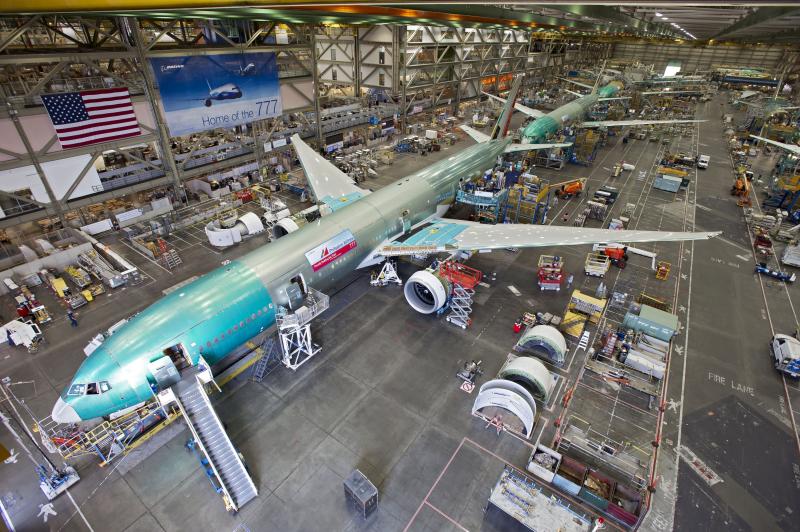
Dubbed the ‘Working Together’ group within Boeing, at the first meeting in January 1990 the attendees were given a 23-page questionnaire which asked what each wanted in the design. A little over two months later, the manufacturer agreed that the aircraft’s basic characteristics should include a glass cockpit with fly-by-wire controls, a cabin cross-section similar to the 747, capacity for up to 325 passengers and a 10% improvement on the seat-miles cost compared with the Airbus A330 and McDonnell Douglas MD-11.
The airframer also selected its Everett facility in Washington as the location for the final assembly line of the airliner.
In October 1990, United became the 777’s launch customer when it placed an order for 34 Pratt & Whitney-powered aircraft, at the time valued at $11bn, with options for an additional 34. The development phase and planned introduction into service coincided with United’s replacement programme for its ageing DC-10s.

The carrier required the aircraft to perform the following three routes: Chicago to Hawaii, Chicago to Europe and non-stop from Denver (a hot and high airport which results in lower aircraft performance) to Hawaii. ETOPS certification ‘out of the box’ was also a priority for the airline, as much of its international network had a large number of routings that would take its aircraft over expanses of open ocean.
One of the biggest departures from the normal design process was the fact that the Boeing 777 was the first aircraft to be designed completely using three-dimensional computer graphics software. Called CATIA, the package was developed by Dassault Systèmes and is still in use by Boeing today.
The solution enabled the engineers to design and assemble all the components without having to build full-scale mock-ups. The large-scale visualisation tools enabled users to fly through the aircraft looking in detail at all its components. Another piece of software enabled efficient 3D collision detection, which worked in real-time during the design process. Called Voxmap PointShell (VPS), the system identified conflicts between parts in large and complex environments, and also facilitated real-time physics-based simulation.
Not initially fully convinced of the technology’s abilities, Boeing built a physical version of the nose section to confirm its results. Upon inspection, the manufacturer realised the technology had been very successful and immediately cancelled all further mock-up plans.
Construction and Testing
The Seattle-based airframer outsourced an unprecedented level of the 777’s manufacturing to third parties. Subcontractors included Mitsubishi Heavy Industries, Kawasaki Heavy Industries, Hawker de Havilland and many more. The Boeing 787 would later outdo the 777 in terms of outsourcing.
At Everett, the firm doubled the size of its facility installing two new assembly lines. The $1.5bn project provided the much-needed space for the company to produce the jets at the rate it needed to, in order to keep up with demand.
Three propulsion options were available for the initial 777-200 variant. The General Electric GE90, Rolls-Royce Trent 800 and the Pratt & Whitney PW4000 turbo fan engines were all available, each with around 77,000 lbf (340 kN) of thrust and higher output models for larger variants of the aircraft.
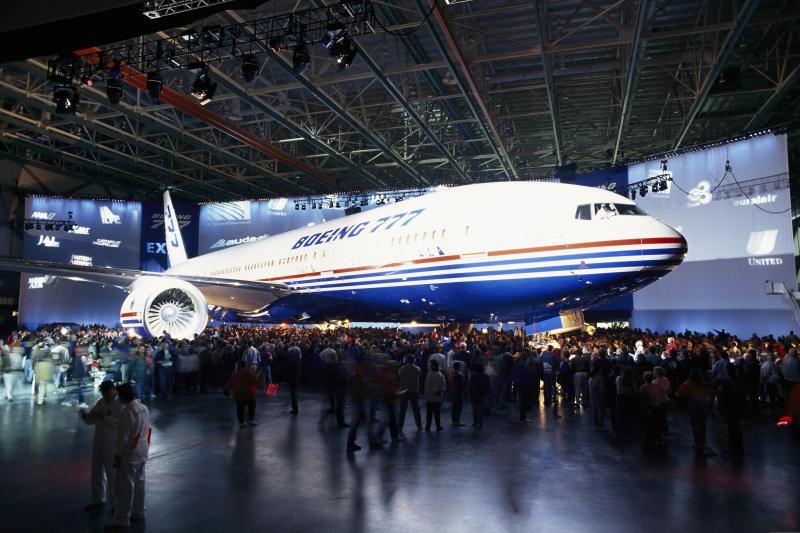
On April 9, 1994, the first 777, N7771 (c/n 27116) rolled out of the factory. Its first flight took place on June 12, under the command of chief test pilot, John Cashman. This event marked the start of an 11-month flight test programme that was more extensive than on any previous Boeing model. At locations that varied in climate, nine aircraft fitted with the three engine variants were put through their paces to systematically test every aspect of the widebody.

To satisfy the all-important ETOPS requirements, Boeing’s flight test programme included eight 180-minute single-engine test flights to prove that the jet could operate safely if one engine failed during flight over water.
In the end, the type was awarded airworthiness certificates by the US Federal Aviation Administration (FAA) and the European Joint Aviation Authorities (JAA) on April 19, 1995.
United’s New Toy
As the launch customer for the type, United Airlines was the first to be able to put the widebody to use. The operator accepted delivery of its initial airframe, N777UA (c/n 26916) on May 15, 1995. Powered by two Pratt & Whitney PW4000 engines, the jet was configured to seat eight first class, 40 business class and 218 economy class passengers.
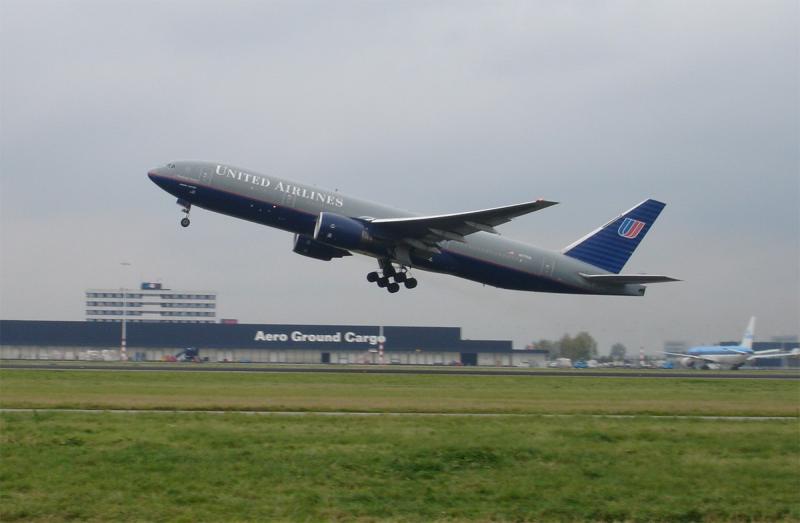
The widebody’s debut revenue service for the airline took place on June 7, 1995 and came in the form of a rotation between London/Heathrow and Washington/Dulles. As well as being Boeing’s first fly-by-wire aircraft, the 777 was the first that came with an ETOPS 180-minute certification ‘out of the box’, enabling United to operate a twin-engine jet on pacific routes for the first time. The type later received an extension to 207 minutes when it departed from approved airports.
Since taking delivery of its earliest example in 1995, United Airlines accepted a further 103 airframes. The carrier has operated the -200, -200ER and -300ER variants over the years and now after some retirements, holds a fleet totalling 96 jets.
A Captain’s Perspective

After soloing in 1969 and a career in the US Air National Guard, Myron Ashcraft joined United Airlines in 1978.
Starting out on the Douglas DC-8, he then moved through the carrier’s fleet, flying as the co-pilot on the Boeing 737, 727, 747-200 and DC-10 before making captain on the 737-300/500. After six years flying the Airbus A320, Ashcraft finished his career with the Chicago-based carrier as captain on the Boeing 777.
“I started flying the 777 in 2002,” Ashcraft recalls. “I was late to the game, but it was a great airplane by the time I got to it because all the small bugs had been worked out.”
A common compliment the type receives from many pilots is about its reliability. Working closely with airline customers in the design process certainly paid off when it got to the front-end of operating the aircraft.
“I thought the reliability of the airplane was fantastic,” says Ashcraft. “They built in a lot of redundancy and we used it, we almost never cancelled, in fact I can’t remember ever cancelling [for mechanical reasons] and I flew the 777 for 12 years. It just didn’t ever break.”

Ashcraft says that the worst mechanical failure he experienced was regarding the detection of metal flakes in the oil for the constant speed drive unit of the generator, which provides an electrical supply to the jet in flight. This happened while the aircraft was in Hawaii and he said they simply disconnected the system and flew back across the pacific with the auxiliary power unit (APU) instead.
Commenting on its flying characteristics, Ashcraft says the jet was an honest airplane to fly. “It had a great big fat wing on it, and it behaved as you would expect an aircraft to fly. If the day was long it was just fantastic to fly. When it was heavy, it flew like a heavy airplane, when it was light it handled like a light airplane and I don’t know how they did that. It was magic.”
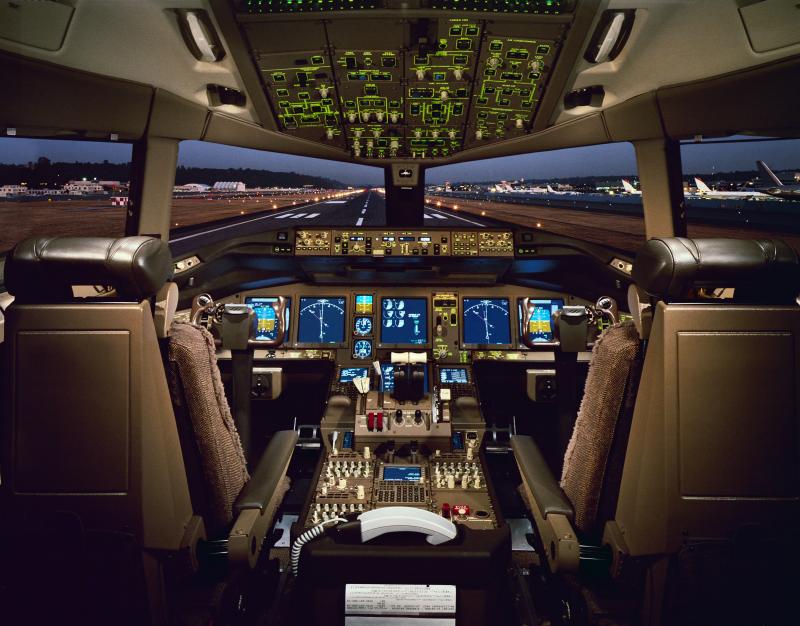
Reminiscing about the most memorable qualities of the type, Ashcraft commented: “I used to say that it would slow down or come down, but it would not do both. Other airplanes will, you could cross the outer marker at 250kts in a 727 and still land but if you try that in the 777 there was no way, you’d go straight over the airport but you sure as hell wouldn’t land!
“It also had great big screens in it. I’d flown quite a bit of glass by the time I got to the Triple Seven but the displays in the aircraft were just outstanding. When I was flying the type I was probably using reading glasses, but I didn’t need them in the 777. They were that clear and easy to read.”
Continuous Improvement
To gain an insight into Boeing’s perspective while exploring the future of the 777, Key.Aero spoke to Chris Tasche, the 777/777X model leader for product marketing at Boeing. Having been involved in both technical and marketing roles with the aircraft since 1995, he is ideally placed to talk about the jet.
Commenting on the 777’s 25 years of service, Tasche says: “From our standpoint it’s a great feeling – it’s a testament to what the customers think of the airplane and the fact that they have been so successful with it. It’s an aircraft that has kept up with the times.”
Keep up with the times it certainly has, as over the years, Boeing has added features and made improvements to the 777 which have benefited its customers. One of the most appreciated enhancements has been the reduction in fuel burn.

“We’ve continued to enhance the fuel consumption by doing some minor aerodynamic tweaking of the wing, and the engine also improved over time,” says Tasche.
In 2016, the 777-300ER gained a two per cent additional fuel-mileage improvement on top of an existing two per cent increase. “About half of it is the engine and the other half is doing some wing and flight control adjustments,” explains Tasche. “We reshaped the outboard trailing edges of the wing a little bit to gain that benefit, and we also added a little bit more elevator bias to reduce the horizontal stabiliser trim. We also lengthened the trailing edges on the leading-edge slats to improve airflow.”
The aircraft’s ETOPS certification, which continues to be an important aspect for customers, has also been continually improved over the life of the type. What started off as a 180-minute certification, has grown to 330 minutes for the -300ER variant.
As for maintenance, Tasche says Boeing has improved the programme which operators are required to follow. “The intervals and tasks themselves have been increased so that we can reduce the maintenance burden on the airplane over time.”
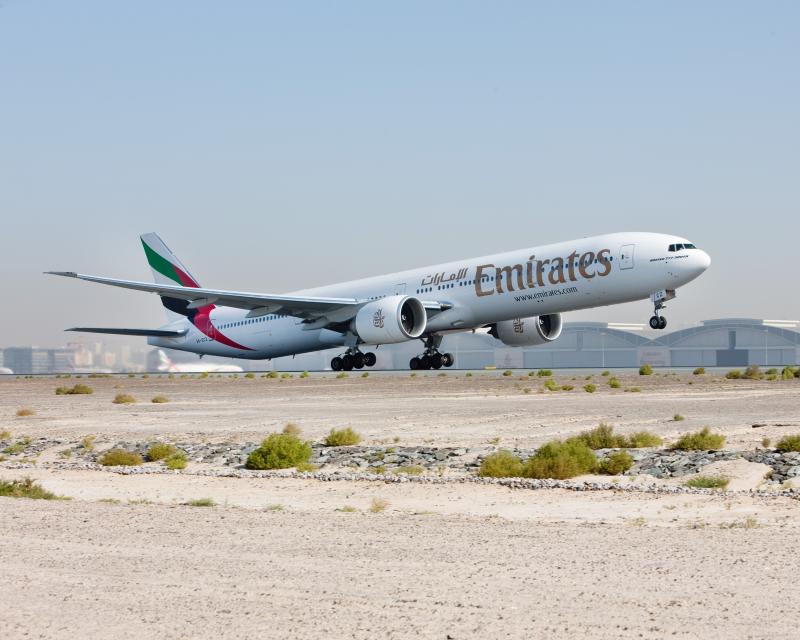
The company has also embraced the technological advancements it’s made over the years, swapping out old for new on freshly delivered jets. For example, the tail strike protection system has been upgraded in the -300ER as the company replaced a hydraulic system and strengthened materials in the tail for a software-based solution.
“It’s interesting because the advanced tail strike protection actually meant that we removed the physical tail strike from the -300ER and now it’s an electronic system,” says Tasche. “What that means is that the flight control software will nudge the control column a little bit to prevent you from striking the tail.”
Summing up the reasoning behind this decision, Tasche adds: “We can make it so the plane can take a tail strike, or we can now move forward and make sure the aircraft doesn’t get a tail strike. We went from preventing damage from the strike to preventing the tail strike altogether.”
This system has now been incorporated in all Boeing’s latest generation widebodies, including the -300ER, 787 and now the 777X.
An "Evolutionary Step"
In November 2013, after many years of success with the type, Boeing formally launched the 777X, the third generation of the well-known widebody. This next-generation jet will come in two variants: the 777-8 and the 777-9, which are expected to provide seating for 384 and 426 passengers respectively.
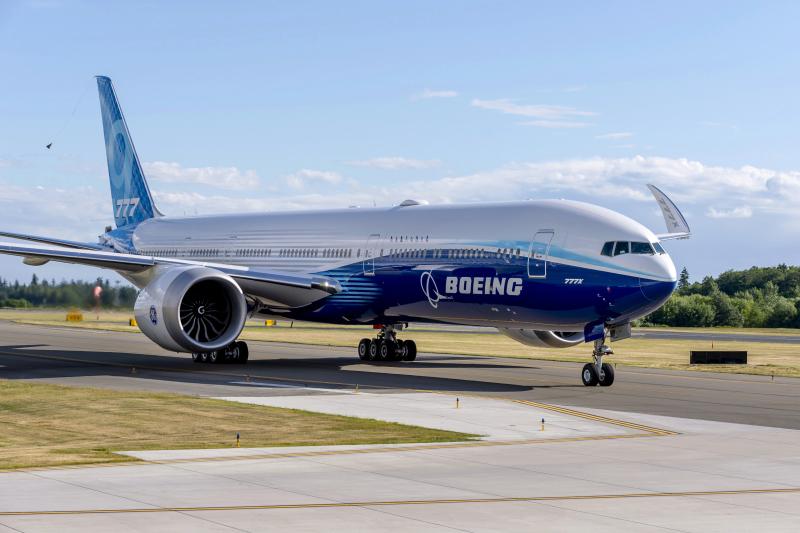
The original 777 was a clean-sheet design, but this next-generation variant has been created to build upon the strong platform that Boeing has built up over the last 30 years.
“We went through all kinds of studies of what we should change, and we what shouldn’t,” explains Tasche. “What we really wanted to do was pick the alterations that would drive the best benefits for the airlines and so we introduced a brand-new composite wing, and also a number of 787 avionic and data systems. We kept the technology in place that had been extremely reliable and then we also improved some systems using lessons we’d learned over the life of the airplane.
“If you look at the 777X, it is literally a hybrid of a 787 and an existing Triple Seven. That’s the best way to describe it.”
One of the most notable differences between the two variants is the addition of folding wing tips in the new jet. These have caught the eye of many onlookers, as it’s not something the commercial aviation industry has seen before.
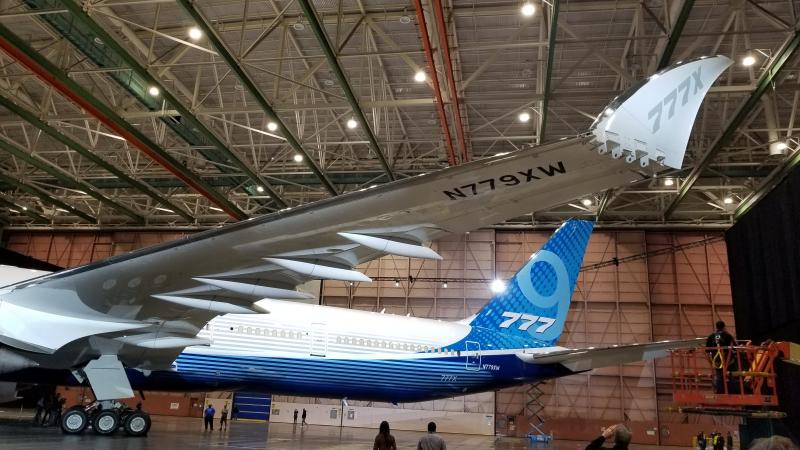
The reasoning behind adding them to the aircraft was to make sure it could fit within airport wingspan constraints. The current generation widebody is classified as what’s called a ‘Code E’ aircraft, meaning it can taxi and park on stands at airports with no issues. If the wings did not fold on the 777X then it would be classed as a ‘Code F’ type, the same as the 747-8 and the Airbus A380. This category would reduce the number of airports the type would be able to operate to.
“The wingspan of the 777X was increased from 65 to 72m, which puts it in the code F category, and we didn’t want to have the kind of airport constraints you’d have on the larger quads (four-engine aircraft) so we developed the folding wing tips,” Tasche explains.
The larger wingspan also provides a three per cent improvement to fuel efficiency compared with the previous generation type.
“They actually work very much like a trailing edge flap system,” says Tasche. “They have rotary gear actuators and power drive units, so there are actually no components in the wing tip itself – they’re all located in the structure of the wing along the hinge line. It’s just an aerofoil that gets moved up and down.”
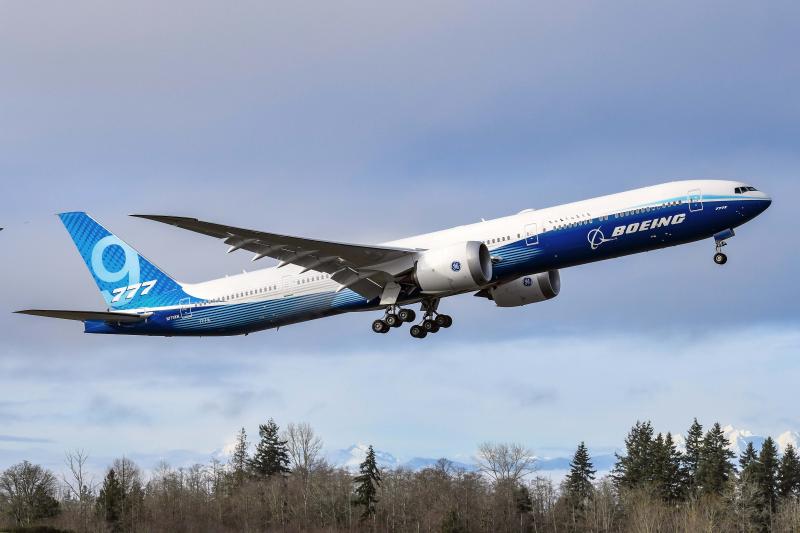
Currently, there are two 777-9s – N779XX (c/n 64241) and N779XW (c/n 64240) – in the flight test programme and a further two are scheduled to join further down the line. The type itself features a new engine, the General Electric GE9X, which Boeing says is around 10 per cent more efficient than the current model.
Looking at the flight deck, the 777X shares its design with the 787, meaning that there is good flight crew cross compatibility. There are, however, a few small differences, including the fact that there are six windows on the 777X, and only four on the Dreamliner.

“We introduced the 787 flight deck into the airplane along with a lot of the data transmission architecture… we don’t have built-in electronic flight bags on the 777X because in the age of tablets and small PCs, airlines and pilots actually prefer to have their own [devices] with their own information on them and it connects to the airplane that way,” says Tasche. “Back in 2003, the built-in flight bag was the latest craze because nobody predicted tablets like iPads.”
The Future
With 25 years of service under its belt already and deliveries of the 777X set for 2021, it’s likely that Boeing is hoping to see the same levels of success it has experienced with the original variants. A lot of work is being put into the vigorous flight test programme, which should ensure that the 777X is as much of a workhorse as its predecessor.
“Having been involved with 787s, 777s and now the 777X for so long, I think the 777X will end up being as reliable, if not more so, than the -300ER,” says Tasche. “That and the 787 will be the most reliable airplane at some point.”

One stumbling block the programme may encounter is the current COVID-19 crisis. The pandemic has caused unprecedented levels of damage to the industry and could derail the 777X’s campaign to succeed its predecessor.
With 66 unfulfilled orders for the current-generation 777 and a backlog of 309 for the 777X, the order book is still strong for the type. To deal with the pandemic and its associated impact on the industry, Boeing will slow the rate of production from five per month to around three in 2021.
However, there’s no doubt that the 777 itself has had an incredibly successful career. Who’s to say we won’t be back in 25 years to mark its 50th year of commercial service?

